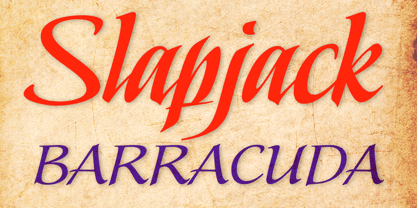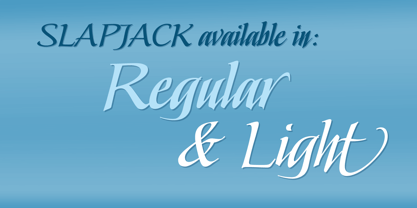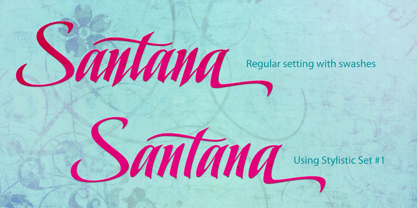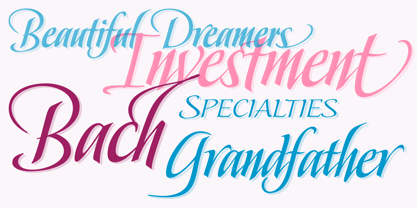Wählen Sie diesen Lizenztyp, wenn Sie eine app für iOS, Android oder Windows Phone entwickeln und Sie die Datei Font in den Code Ihrer mobilen Anwendung einbetten.
Slapjack
von Stephen Rapp




- Aa Glyphen
-
Bestes AngebotFamilienpakete
- Einzelschnitte
- Technische Daten
- Lizenzierung
Per Font:
$39.50
Paket mit 2 Fonts:
$79.00
Über die Schriftfamilie Slapjack
Slapjack ist eine einzigartige Wiedergabe einer breitrandigen kalligrafischen Schrift, die sich ideal für Verpackungen, Beschilderungen und Beschriftungen eignet. Ihre Präsenz ist auffallend fett und rhythmisch, aber dennoch stilvoll und elegant. Mit einer Glyphenanzahl von über 700 ist Slapjack eine voll ausgestattete Profischrift Font. Sowohl reguläre als auch leichte Schriftschnitte verfügen über kontextuelle und stilistische Alternativen, stilistische Sets, Schwungzeichen, Ligaturen, Brüche und Unterstützung für mitteleuropäische Sprachen. Wenn Sie Adobe InDesign verwenden, das stilistische Sets unterstützt, können Sie Ihren Text sofort in eine Version ohne Grundlinienverbindungen umwandeln, um ein schlankeres Aussehen zu erzielen. Diese können auch über die Glyphenpalette ausgewählt werden. Im Gegensatz zu den meisten Skripten Fonts ist Slapjack außerdem so konzipiert, dass es auch in Großbuchstaben gesetzt werden kann, was seine Vielseitigkeit noch erhöht.
Designer: Stephen W. Rapp
Herausgeber: Stephen Rapp
Foundry: Stephen Rapp
Eigentümer des Designs: Stephen Rapp
MyFonts Debüt: Januar 16, 2013
Über Stephen Rapp
Stephen Rapp ist in Kent, OH, ansässig. Zum Schriftdesign kam er durch seine Arbeit als Schriftsetzer bei American Greetings. Er hat bei vielen der besten Kalligraphen gelernt und Workshops im ganzen Land und auf internationalen Konferenzen gegeben. Auf der Grundlage seines Fachwissens über Kalligrafie und Schrift entwickelt er Fonts , das sowohl gut gestaltet als auch Nutzer freundlich ist. Er entwirft und entwickelt auch eigene Fonts , um die Bedürfnisse von Unternehmen und Privatpersonen zu erfüllen. Seine kommerziellen Fonts haben Auszeichnungen wie den Type Director's Club Award erhalten.
Mehr lesen
Weniger lesen